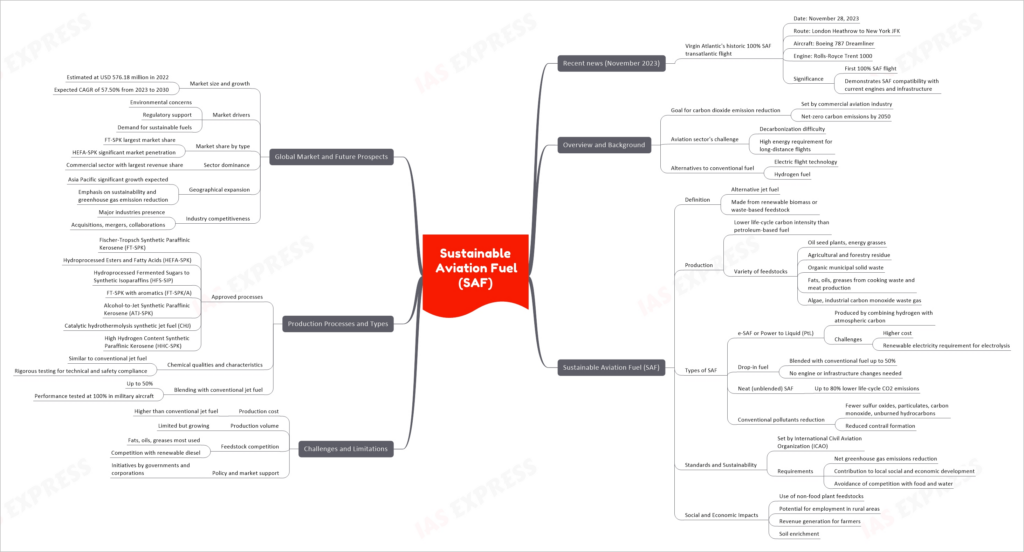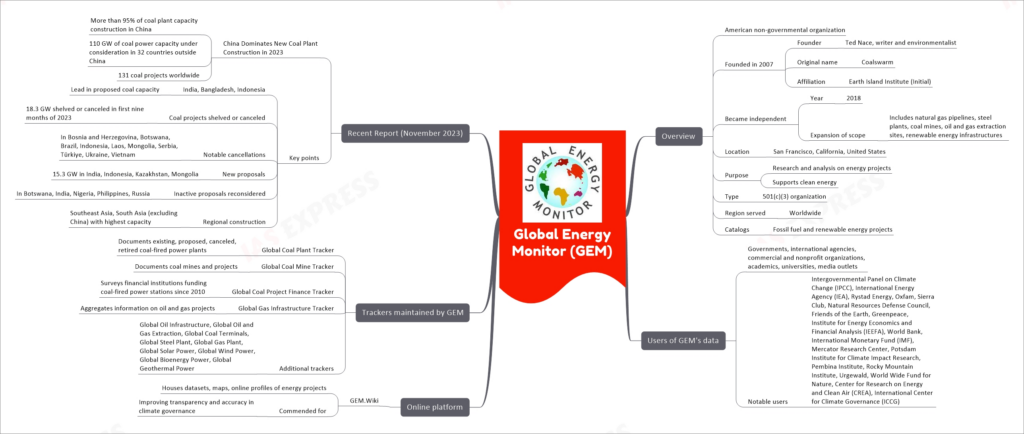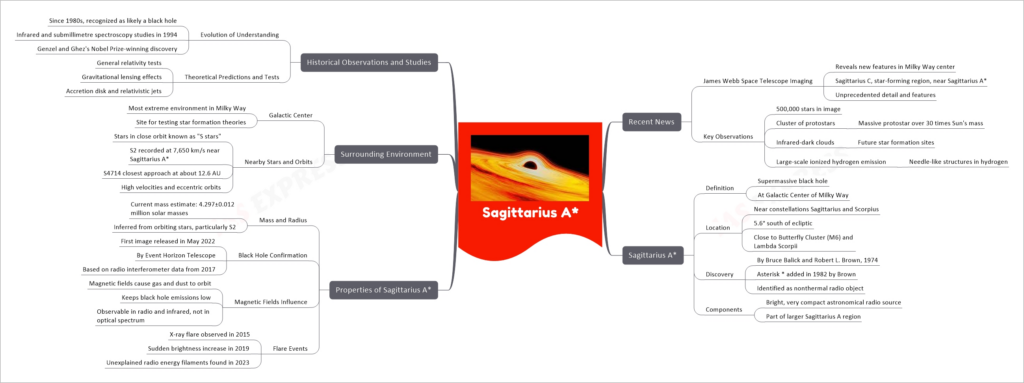[Newsbits] 30.11.2023 – STEVE, Sustainable Aviation Fuel (SAF), Global Energy Monitor (GEM) & More

This topic of “Strong Thermal Emission Velocity Enhancement (STEVE)” is important from the perspective of the UPSC IAS Examination, which falls under General Studies Portion.
Introduction
Recent highlights include the crucial role of citizen scientists in identifying and documenting STEVE. There is potential in studying STEVE to unravel the mysteries of its origin, creation, physics, and nature. The name “Steve” is now an homage to the initial, informal name given by the discoverers and represents Strong Thermal Emission Velocity Enhancement.
Atmospheric Optical Phenomenon
STEVE is an atmospheric optical phenomenon that has similarities to the Aurora Borealis and Australis. However, unlike the auroras, which are caused by the interactions of particles like electrons and protons with the Earth’s atmosphere, STEVE is caused by hot gases.
Appearance
STEVE manifests as a thin ribbon of purple and green light visible in the sky. This distinctive feature sets it apart from typical auroral displays.
Naming
The phenomenon was named in late 2016 by a group of aurora watchers from Alberta, Canada. The name STEVE was initially a placeholder, but it has since been adopted formally to represent Strong Thermal Emission Velocity Enhancement.
Primary Feature
The primary feature of STEVE is a purple or mauve color arc that is approximately east-west aligned. This is distinct from the equatorward boundary aurora, which has a different color palette and alignment.
Altitude Profiles
The altitude profiles of STEVE have been determined during specific events, such as the one on July 17, 2018. These profiles have been measured using calibrated photographs taken by citizen scientists.
Continuum Spectrum
The continuum spectrum of STEVE has been explained through spacecraft observations. It is known to co-occur with subauroral ion drifts, which are typically invisible plasma flows.
Discovery and Research
The discovery and ongoing research of STEVE are significantly bolstered by citizen science contributions.
Citizen Science Contributions
Reports of STEVE have been shared in online forums, with an example being 30 reports between 2015 and 2016. Projects like Aurorasaurus, funded by NASA and the National Science Foundation, track aurora borealis through user-submitted reports and tweets.
Ground and Satellite Views
STEVE has been observed for the first time from both ground and space. These observations have been documented by all-sky cameras run by the University of Calgary and the University of California, Berkeley, as well as the Swarm satellite of the European Space Agency (ESA).
Importance in Research
Research on STEVE helps in understanding Earth’s magnetic fields and their interaction with charged particles in space. It provides valuable insight into the chemical and physical processes in Earth’s upper atmosphere, as well as their effects on the lower parts of the atmosphere.
Characteristics and Behavior
STEVE is not a normal aurora. While auroras typically occur globally in an oval shape and can last for hours with primary colors of greens, blues, and reds, STEVE is characterized by a purple color with a green “picket fence” structure and lasts for a shorter duration.
Creation Process
The process begins with the Sun sending charged particles toward Earth, which applies pressure on the magnetic field. This leads to magnetic reconnection, an explosive process that causes a glow in the upper atmosphere, generating both auroras and STEVE.
Uniqueness
STEVE is unique in that it travels along different magnetic field lines than the aurora and appears at lower latitudes, such as in southern Canada. It comprises a fast-moving stream of extremely hot particles, known as subauroral ion drift (SAID), which was previously studied without a known visual effect.
Location
STEVE is observed in the subauroral zone, at lower latitudes than most auroras, in an area that has not been well researched.
Connection to Auroras
STEVE often appears in the presence of auroras, indicating a chemical or physical connection between the higher latitude auroral zone and the lower latitude subauroral zone.
Challenges in Studying
The study of STEVE poses challenges as simultaneous ground and space recordings are rare. The Swarm satellite orbits the Earth every 90 minutes, and since STEVE can last up to an hour in a specific area, capturing it becomes a challenge of perseverance and probability.
Conclusion
STEVE represents a vibrant example of community involvement in scientific discovery, bridging the gap between amateur enthusiasm and professional research, enriching our understanding of atmospheric phenomena.
This topic of “Sustainable Aviation Fuel (SAF)” is important from the perspective of the UPSC IAS Examination, which falls under General Studies Portion.
Introduction
In a significant leap towards sustainable aviation, November 2023 witnessed Virgin Atlantic’s historic transatlantic flight, powered entirely by Sustainable Aviation Fuel (SAF). This pioneering event, featuring a Boeing 787 Dreamliner flying from London Heathrow to New York JFK, represents a major milestone in the aviation industry’s journey towards decarbonization.
Overview and Background of SAF
Goal for Carbon Dioxide Emission Reduction
The commercial aviation industry, amidst recovering from COVID-19 impacts, has committed to achieving net-zero carbon emissions by 2050. This ambition reflects a growing recognition of the environmental footprint of air travel and an urgent need to address climate change.
Aviation Sector’s Challenge in Decarbonization
Aviation, with its high energy demands for long-distance flights, faces significant hurdles in reducing carbon emissions. While alternatives like electric flight technology and hydrogen fuel are evolving, their current limitations make immediate widespread adoption challenging.
Sustainable Aviation Fuel (SAF): A Comprehensive Approach
Definition and Production
SAF is a cleaner alternative to conventional jet fuel, derived from renewable biomass or waste-based feedstock. Its production results in lower life-cycle carbon intensity and utilizes a variety of feedstocks including plants, agricultural residues, and waste oils.
Types of SAF
There are various types of SAF, including e-SAF or Power to Liquid (PtL) fuels. These are produced by combining hydrogen with carbon extracted from the atmosphere, albeit with higher production costs and significant energy requirements for electrolysis.
Drop-in Fuel and Neat SAF
SAF is a “drop-in” fuel, blendable with conventional fuel up to 50%, requiring no modifications to existing aircraft engines or fueling infrastructure. Unblended SAF can significantly reduce life-cycle CO2 emissions by up to 80%.
Reduction in Conventional Pollutants
SAF emits fewer sulfur oxides, particulates, carbon monoxide, and unburned hydrocarbons. This not only improves local air quality around airports but also reduces the formation of contrails, which contribute to aviation’s climate impact.
Standards and Sustainability
The International Civil Aviation Organization (ICAO) has set standards for SAF to ensure net greenhouse gas emissions reduction and to contribute to local social and economic development.
Social and Economic Impacts
The production of SAF from non-food plant feedstocks offers potential benefits including job creation in rural areas, additional revenue for farmers, and soil enrichment.
Challenges and Limitations
Production Cost and Volume
Despite its environmental benefits, SAF currently costs significantly more than fossil-based fuel and is produced in limited volumes.
Feedstock Competition and Policy Support
The majority of SAF is produced from fats, oils, and greases, leading to competition with renewable diesel. The growth of the SAF industry is also contingent on supportive policies and market incentives.
Production Processes and Types
Approved Processes
There are seven internationally approved processes for SAF production, each with specific feedstock options and blending limits.
Chemical Qualities and Characteristics
SAF must maintain chemical qualities akin to conventional jet fuel, undergoing rigorous testing to ensure safety and technical compliance.
Blending with Conventional Jet Fuel
While currently blendable up to 50% with conventional jet fuel, advancements are paving the way for higher blend limits, with successful 100% usage in military aircraft.
Global Market and Future Prospects
Market Size and Growth
The global SAF market, valued at approximately USD 576.18 million in 2022, is projected to experience robust growth, driven by environmental concerns, regulatory support, and increasing demand for sustainable fuels.
Market Share by Type and Sector Dominance
Fischer-Tropsch Synthetic Paraffinic Kerosene (FT-SPK) and Hydroprocessed Esters and Fatty Acids (HEFA-SPK) are leading in market share. The commercial sector currently dominates the market, driven by regulatory demands and environmental concerns.
Geographical Expansion
The Asia Pacific region is expected to see significant growth due to a focus on sustainability and greenhouse gas emission reduction. This is further bolstered by the proliferation of low-cost airlines and infrastructure development in emerging economies.
Industry Competitiveness
The global SAF market is marked by intense competition among major industries, with key players engaging in strategic acquisitions, mergers, and collaborations.
Conclusion
The successful flight of Virgin Atlantic’s 100% SAF-powered Boeing 787 Dreamliner marks a pivotal moment in aviation’s quest for sustainability. SAF represents not just an alternative fuel but a comprehensive solution addressing the environmental impacts of air travel. While challenges in production cost and volume persist, the ongoing advancements, coupled with increasing market demand and supportive policies, signal a promising future for sustainable aviation.
Introduction
In November 2023, Global Energy Monitor (GEM) highlighted that over 95% of coal plant construction began in China, signaling a significant trend in global energy infrastructure. GEM, as a key player in tracking and analyzing global energy trends, offers critical insights into the evolution of the energy landscape, emphasizing the ongoing significance of coal in global power generation.
Overview of Global Energy Monitor (GEM)
GEM is an American non-governmental organization founded in 2007 by writer and environmentalist Ted Nace. Initially named “Coalswarm” and affiliated with the Earth Island Institute, it expanded its scope in 2018 to include a broader range of energy infrastructures. Headquartered in San Francisco, GEM’s mission focuses on the research and analysis of both fossil fuel and renewable energy projects globally.
Purpose and Impact
- Research and Analysis: GEM supports clean energy through extensive research and analysis of energy projects.
- Users of GEM’s Data: GEM’s data serves a wide range of users, including governments, international agencies, commercial and nonprofit organizations, academics, universities, and media outlets. Notable users include IPCC, IEA, World Bank, and Greenpeace.
- Online Platform: GEM.Wiki is the organization’s platform, housing datasets, maps, and profiles of specific energy projects. It’s recognized for enhancing transparency and accuracy in climate governance.
Trackers Maintained by GEM
- Global Coal Plant Tracker: Documents global coal-fired power plants, including those existing, proposed, canceled, or retired.
- Global Coal Mine Tracker: Focuses on coal mines and related projects worldwide.
- Global Coal Project Finance Tracker: Surveys financial institutions funding coal power stations since 2010.
- Other Trackers: Includes Global Gas Infrastructure Tracker, Global Oil and Gas Extraction Tracker, and trackers for steel plants, solar power, wind power, bioenergy, and geothermal power.
Recent News: China’s Dominance in Coal Plant Construction
As of 2023, China has taken a leading role in new coal plant construction, with over 95% of the capacity initiated globally. Despite some projects being shelved or canceled, 110 gigawatts of coal power capacity are under consideration in 32 countries outside China, involving 131 coal projects.
Key Points from the Recent News
- Dominance of China: China’s significant role in global coal plant construction.
- Global Trends: Despite cancellations, new coal projects continue to emerge.
- Leading Countries Outside China: India, Bangladesh, and Indonesia lead in proposed coal capacity.
- Shelved and Canceled Projects: 18.3 GW of coal capacity moved from proposed to shelved or canceled in the first nine months of 2023.
- Regional Construction: Southeast Asia and South Asia, excluding China, have the highest capacity under construction.
Conclusion
Global Energy Monitor’s recent findings on China’s dominance in coal plant construction underline the complex realities of global energy transitions. While renewable energy sources gain traction, coal remains a significant part of the energy mix, especially in rapidly developing regions. GEM’s role in providing transparent and accurate data is crucial for understanding and navigating these dynamic energy landscapes.
The recent extension of Fast Track Special Courts (FTSCs) by the Indian Union Cabinet underscores the ongoing commitment to expedite judicial processes in cases involving sexual offences, emphasizing the criticality of these courts in the Indian justice system.
Fast Track Special Courts (FTSCs)
- Safety and Security
- Aimed at protecting women and girl child.
- Government’s response includes stringent punishment for rape, under the Criminal Law (Amendment) Act, 2018.
- Necessity of FTSCs
- Established due to the prevalence of sexual offences and prolonged trials.
- Designed to provide immediate relief to victims.
Implementation
- Department of Justice
- FTSCs have been implemented since October 2019.
- Scheme Nature
- A Centrally Sponsored Scheme.
- Setup
- Total of 1023 FTSCs, including 389 exclusive POCSO Courts.
- Operational across 31 States and UTs, with 28 participating.
- Composition
- Each court comprises one Judicial Officer and seven staff members.
- Funding
- Initial period funding (2019-2021) and continuation (up to 2023).
- Recent extension from 2023 to 2026 with significant financial allocation.
- Monitoring
- Implementation of an online monitoring framework for case statistics.
Purpose and Goals
- Trial and Disposal
- Focuses on expeditious trial and disposal of pending cases of rape and offences against children.
- Expected Disposals
- Each FTSC aims to dispose of a significant number of cases quarterly and annually.
- Initial Target
- The government set a target for disposing of a large number of pending cases at the scheme’s launch.
Current Status
- Functional FTSCs
- As of August 2023, a considerable number of FTSCs are operational.
- Disposal of a large number of pending cases.
- Financial Allocation
- Specific allocation for the financial year 2023-24.
- Concerns
- There are concerns regarding the delay in the full implementation of the scheme.
Extension Approval (November 2023)
- Union Cabinet’s Decision
- Recent extension approval by the Union Cabinet for three years.
National Mission for Safety of Women (NMSW)
- FTSCs and NMSW
- FTSCs are a part of NMSW, initiated by the Ministry of Law and Justice.
- Infrastructure
- The scheme focuses on operational functionality rather than creating permanent infrastructure.
The extension of the Fast Track Special Courts scheme reflects India’s continued commitment to expedite justice in cases of sexual offences, aligning with broader efforts to enhance the safety and security of women and children.
This topic of “Pradhan Mantri Janjati Adivasi Nyaya Maha Abhiyan (PM JANMAN)” is important from the perspective of the UPSC IAS Examination, which falls under General Studies Portion.
Background
- Indian Government Initiative: Launched by Prime Minister Narendra Modi on Janjatiya Gaurav Diwas in Khunti, Jharkhand.
- Focus: Aimed at aiding Particularly Vulnerable Tribal Groups (PVTGs).
Financial Aspects
- Total Outlay: Rs 24,104 crore, with contributions from both the central (Rs 15,336 crore) and state governments (Rs 8,768 crore).
Beneficiaries
- Tribal Population in India: As per the 2011 census, there are 10.45 crore tribal people in India.
- Targeted Groups: 75 tribal communities across 18 states and the Union Territory of Andaman and Nicobar Islands.
- Beneficiary Identification: Tribal communities with scattered habitations, totaling over 28.16 lakh people in 220 districts.
Interventions and Provisions
- 11 Critical Interventions: Includes housing, roads, clean drinking water, electricity, mobile dispensaries, and mobile towers.
- Housing: Provision for 4.90 lakh pucca homes.
- Roads: Construction of 8,000 kilometers of roads.
- Clean Drinking Water: Piped supply for PVTG habitations and community supply in smaller villages.
- Electricity: Last-mile connections for 57,000 households and solar off-grid systems.
- Additional Facilities: Including 2,500 Anganwadi centers, multipurpose centers, 500 hostels, and vocational and skilling centers in 60 Aspirational PVTG blocks.
Related Ministries’ Involvement
- Union Ministry of Ayush: Establishing Ayush Wellness Centers and extending Ayush facilities through mobile units.
- Union Ministry of Skill Development and Entrepreneurship: Facilitating skill and vocational training in PVTG habitations, multipurpose centers, and hostels.
Related Initiatives
- Pradhan Mantri PVTG Development Mission: Announced in the Union Budget 2023-24 to improve the socioeconomic conditions of PVTGs.
In a groundbreaking achievement, the James Webb Space Telescope has unveiled new features of the Milky Way’s center, providing unprecedented insight into the star-forming region Sagittarius C and its vicinity to Sagittarius A*, the galaxy’s central supermassive black hole.
This topic of “Sagittarius A*” is important from the perspective of the UPSC IAS Examination, which falls under General Studies Portion.
Sagittarius A* Defined
Sagittarius A*, a supermassive black hole, resides at the heart of the Milky Way. Discovered in 1974 by Bruce Balick and Robert L. Brown, it was later named for its strong radio emissions. Located near the Sagittarius and Scorpius constellations, it’s a critical part of the larger Sagittarius A region.
Key Characteristics
- Mass and Radius: The mass of Sagittarius A* is estimated at approximately 4.297±0.012 million solar masses. This estimation is primarily based on the observations of nearby orbiting stars, notably star S2.
- Confirmation as a Black Hole: In May 2022, the Event Horizon Telescope released the first image of Sagittarius A*, confirming its black hole status.
- Magnetic Field Influence: Observations reveal that magnetic fields direct surrounding gas and dust into orbit around Sagittarius A*, maintaining low black hole emissions. These emissions are visible in radio and infrared wavelengths but not in the optical spectrum.
- Flare Events: Sagittarius A* has shown various flare events, including a significant X-ray flare in 2015 and a dramatic increase in brightness in 2019. Additionally, in 2023, unexplained filaments of radio energy were associated with it.
Surrounding Environment
The center of the Milky Way, where Sagittarius A* is located, offers the most extreme environmental conditions in our galaxy. It serves as a crucial site for testing star formation theories.
Orbiting Stars
- “S Stars”: A group of stars, known as “S stars,” orbit closely around Sagittarius A*. These stars, including S2 and S4714, are observed primarily in infrared wavelengths due to interstellar dust interference.
- Astrophysical Observations: The proximity, high velocities, and eccentric orbits of these stars provide valuable data for establishing the physical dimensions of Sagittarius A* and for observing effects associated with general relativity.
Historical Observations and Studies
Since the 1980s, the central component of Sagittarius A* has been considered a likely black hole. This hypothesis was supported by infrared and submillimetre spectroscopy studies in 1994.
Theoretical Predictions and Tests
- Testing General Relativity: Observations of Sagittarius A* have provided opportunities to test Einstein’s theory of general relativity.
- Gravitational Lensing: The phenomenon of gravitational lensing around Sagittarius A* offers insight into the theoretical predictions about black holes.
- Accretion Disk and Relativistic Jets: The presence of an accretion disk and potential relativistic jets near the event horizon of Sagittarius A* aligns with black hole theories.
Conclusion
The recent advancements in observing Sagittarius A*, including the detailed imagery from the James Webb Space Telescope, have significantly enhanced our understanding of the dynamic and complex environment at the center of our galaxy. These insights not only deepen our knowledge of Sagittarius A* but also contribute to the broader understanding of black holes and galactic dynamics.






